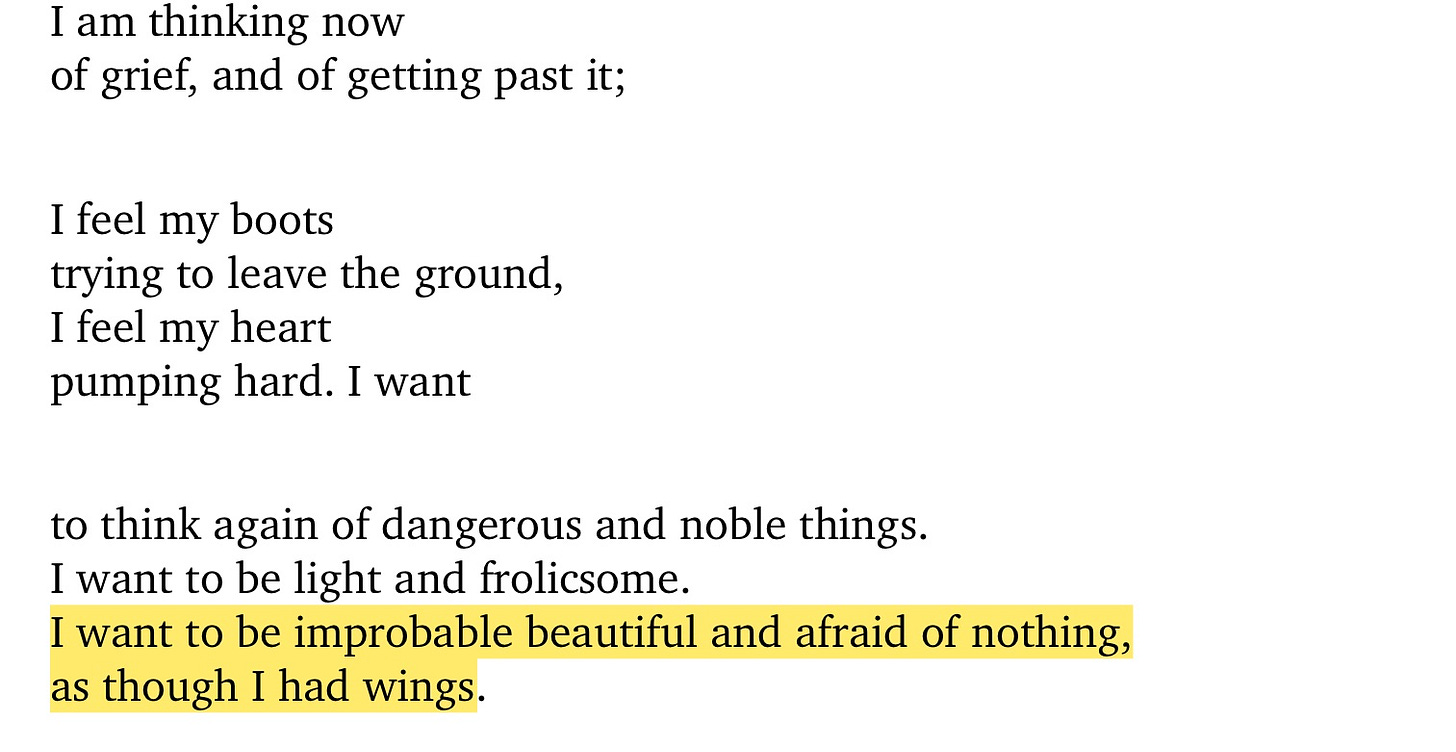If it were up to me, I’d rewrite the Big Bang theory and let everything begin with a Mary Oliver poem.
Lately, I’ve been processing some stuff, “thinking of grief and getting past it” as Oliver writes, and have spent very little time online. My brain refuses to be contaminated by material that comes unsorted in large volumes, so all I’ve been left with is books, which I’ve consumed in copious amounts. It seems to me that books offer the chance to retain some control over the way in which information is absorbed. Take this simply as an admission that tending to my mental health comes at a price. I’ve struggled to keep up with this newsletter and it pains me immensely, especially since I’m sitting on way too many drafts I’m terrified to edit. That’s also self-sabotage and perfectionism for me, but that might require another letter altogether.
Winter moved slowly at first and then in the blink of an eye the sap began to rise and the ladybirds emerged in their customary swirling motions. I will refrain from passing judgement on the season as I am trying to escape the binary conception of good/bad when it comes to labelling the chunks of time that make up my life. Time is just time —or “time is always time”1— and the very notion of it holds so much possibility for transformation that even after weathering out the worst storms, I can almost always attest to their deeply revolutionary nature. Most blessings come disguised after all.
“Everything that happens to you is a teacher. The secret is to learn to sit at the feet of your life and be taught.”
—Polly Berrien Berends
A common misconception about spring is that it’s a season of bursting energy. However, the nonhuman world tells a different story. Following winter-time hibernation, the advent of spring sets the stage for a slow, incremental awakening, constellated with bouts of lethargic nostalgia. This year, fatigue hit me unforgivingly, like one of those big waves surfers travel miles to ride, and so I developed some resistance to shedding my fleece-wrapped skin. I did not want to leave behind my wintering moods and comfort baking. Most importantly, I am yet to give up on my nightly hot water bottle. Still, I’ve decided I’m going to be gentle with myself and take it slow. The days are growing longer and the light filters through the windows at unexpected hours. I’m teaching myself to follow it, could the light save me? I recall the closing lines in Linda Gregg’s “The Light Continues”:
“I don’t expect the light
to save me, but I do believe
in the ritual. I believe
I am being born a second time
in this very plain way.”
Last weekend it finally came to me: the puer. In a dream, a child was born, possibly from my mother. I had travelled in time, albeit in disguise, to witness my own newborn self. Right before the dream interrupted, my dream self exclaimed: “here is my inner child.” According to my (Jungian) therapist, when the puer archetype appears to us in dreams it signals an instinct on the part of the psyche to regenerate. The puer being one of the main archetypes, I was told, it ought to be taken seriously. From the hidden corners of my unconscious, instructions for renewal have been issued and my task now is to prepare the soil for the “moist spark”2 to take root and germinate.
In her latest missive, Jeanette Winterson contemplates the transitional season:
Spring is about beginning again, and beginning again can be so much harder than staying in the winter of your life.
While slowly re-emerging from a particularly cold winter, I am tentatively attempting to “think again of dangerous and noble things,” and “be improbable beautiful and afraid of nothing.” Or so I like to think. How does one do that?
Is it through the inevitable, steady progression towards building up this person I am becoming brick by brick, or, really, grief by grief? Is it through a transformation so radical that leaves only rubble in its wake? Is it through destroying the old that we can finally allow the new to be born?3
from T. S. Eliot’s Ash Wednesday
In Re-visioning Psychology, James Hillman writes: “the puer personifies that moist spark within any complex or attitude that is the original dynamic seed of spirit. It is the call of a thing to the perfection of itself, the call of a person to the Self, to be true to itself, to maintain the connection with its own divinely created eidos.”
In the introduction to a seminar on Children’s Dreams, Carl G. Jung remarked that “for the goal to be attained and the transformation to be completed, a sacrifice has to be made. To achieve the new, the old has at least partly to be abandoned. This is the age-old ‘die and become’!”









